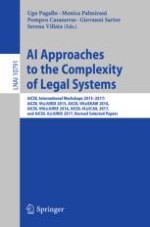2018 | OriginalPaper | Chapter
Legal Patterns for Different Constitutive Rules
Authors : Marcello Ceci, Tom Butler, Leona O’Brien, Firas Al Khalil
Published in: AI Approaches to the Complexity of Legal Systems
Publisher: Springer International Publishing
Activate our intelligent search to find suitable subject content or patents.
Select sections of text to find matching patents with Artificial Intelligence. powered by
Select sections of text to find additional relevant content using AI-assisted search. powered by

 ” – see Fig.
” – see Fig.